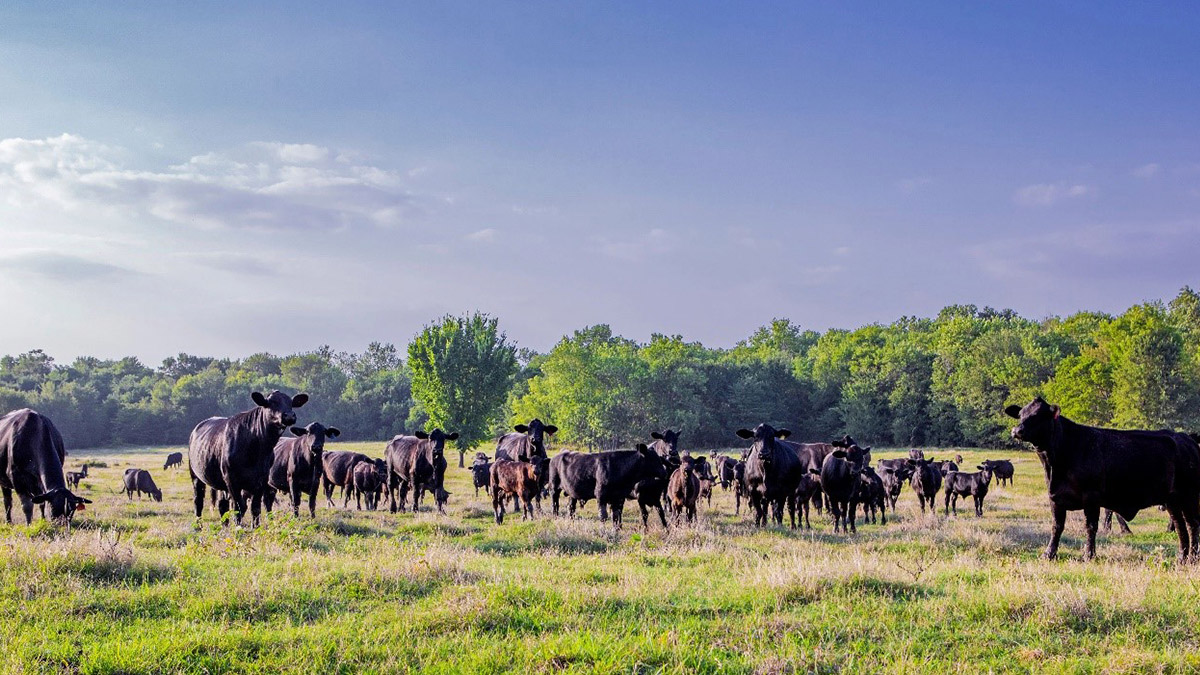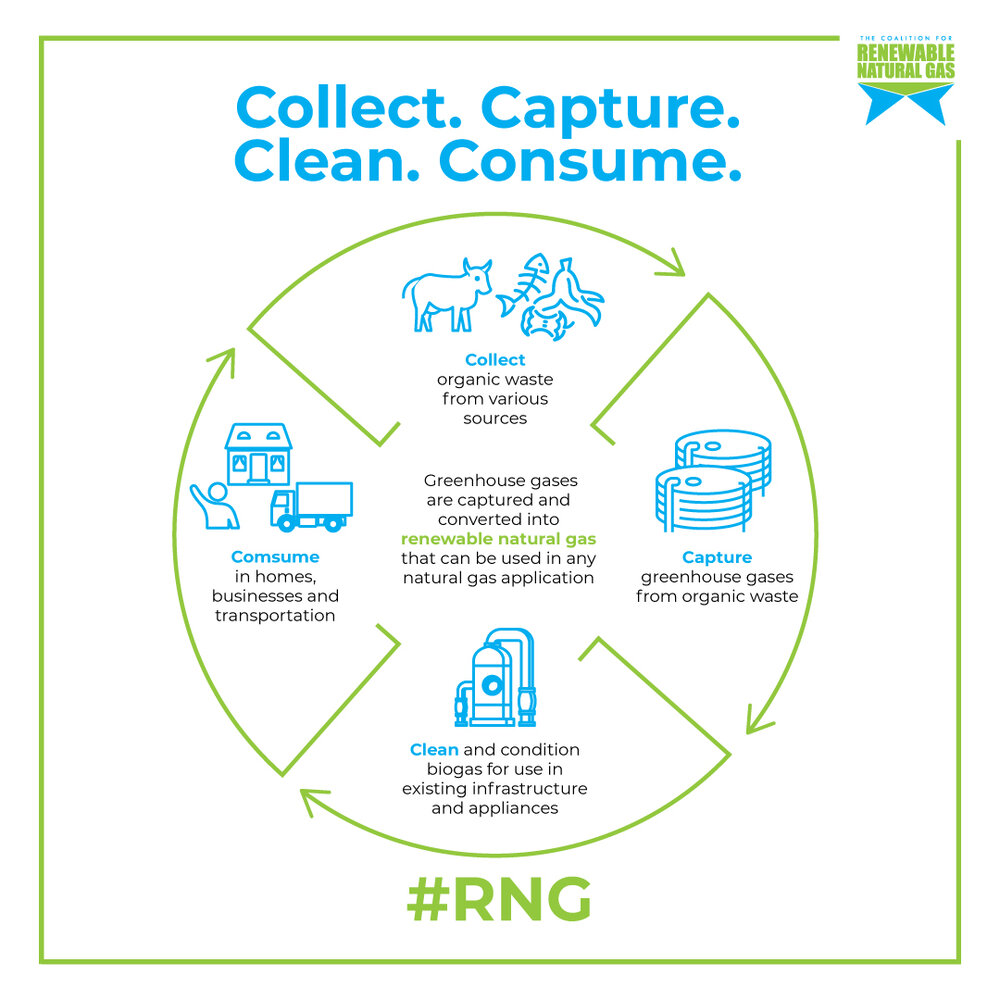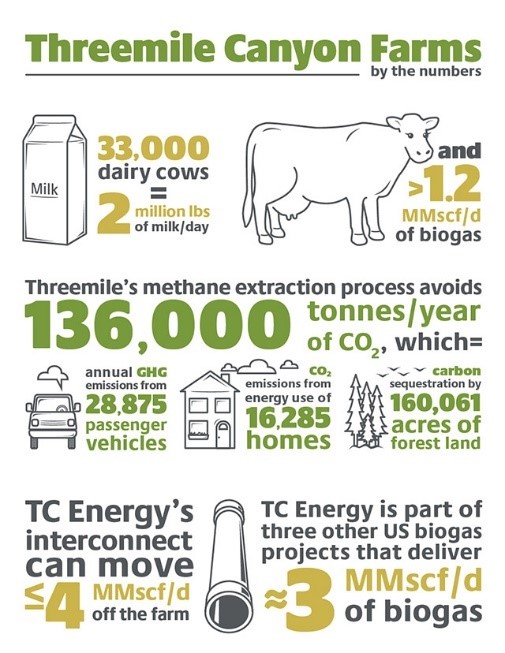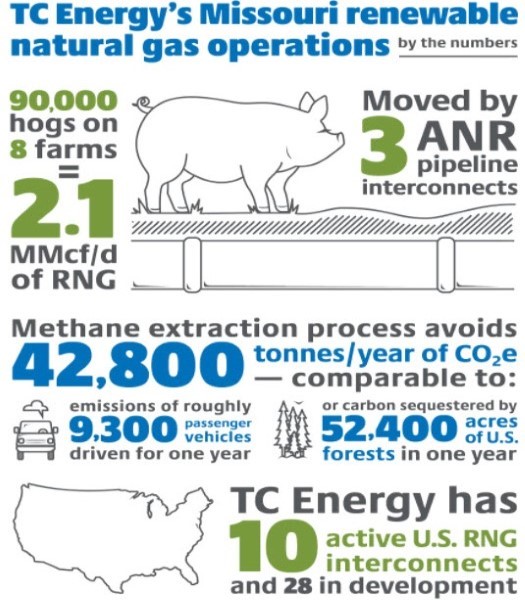
Our growing renewable natural gas footprint
Renewable natural gas (RNG) is a clean and reliable fuel that is often made from…drumroll, please…animal waste! As that waste breaks down, it produces methane, a naturally occurring greenhouse gas. The methane is captured, eliminating it from the atmosphere, and then processed to use as an energy source. This helps to meet a growing energy demand, while transitioning to cleaner sources of energy.

Let’s start with how RNG works
• Step 1: Organic waste is collected from various sources, such as landfills, farms and waste-water treatment facilities.
• Step 2: Greenhouse gases, including methane, are captured from the waste, preventing its release into the atmosphere.
• Step 3: The methane, which is 25 times more potent than CO2 emissions, is cleaned and conditioned for use in existing energy infrastructure.
• Step 4: This RNG is transported along pipelines to homes, businesses and transportation.
RNG versus natural gas
RNG functions like natural gas that we have been using for decades to power homes, schools and public services. RNG is the product of the decomposition of organic matter—such as waste from cows, hogs or chickens; waste from landfills; or even wastewater sludge—that has been processed to meet purity standards. Just like natural gas that is produced from deep within the Earth’s surface, with cleaning and conditioning RNG can meet all pipeline tariff requirements for gas quality and integrated into existing natural gas infrastructure with construction of an interconnect.

Our RNG Operations
TC Energy’s experience in transporting renewable natural gas dates to 2002, when it first connected a landfill site in Canada to our Trans-Québec and Maritimes Pipeline. In the U.S., our pipeline system has been transporting RNG since 2005 with our Davison RNG Project in Davison County, Michigan.
Our portfolio now encompasses 12 interconnects across Québec, Michigan, Kentucky, Missouri, Oregon and Wisconsin – with growth opportunities in the works. TC Energy’s Canadian and U.S natural gas system is currently capable of delivering 8 billion cubic feet (Bcf) per year of RNG from farms and lanfills – and has another 30 Bcf per year of RNG projects in the works.
One of our active interconnects is the Threemile Canyon Farms partnership in Oregon, which produces enough RNG from livestock on the farm to help bring natural gas to consumers in California. The investment reduces approximately 136,000 tonnes/year of CO2 equivalent – the same amount as the annual greenhouse gas emissions from 29,500 passenger vehicles or from the energy consumption of 16,300 homes.

We have three active interconnects in Missouri. At full ramp-up, our Missouri interconnects will flow a combined 2.1 million cubic feet per day of RNG produced from hog waste, avoiding some 42,800 tonnes per year of CO2 equivalent—comparable to the emissions of roughly 9,300 passenger vehicles driven for one year.
Going Forward
Our RNG capability is expanding with new interconnects being added each year and commercial discussions in progress as many of our customers are interested in the carbon-neutral energy opportunity. We expect to continue to grow our RNG interconnect footprint in the coming years, as this technology becomes more accessible and awareness of RNG is increased. Learn more about how RNG is helping with the energy transition through the RNG Coalition, of which we are proud to be a member!